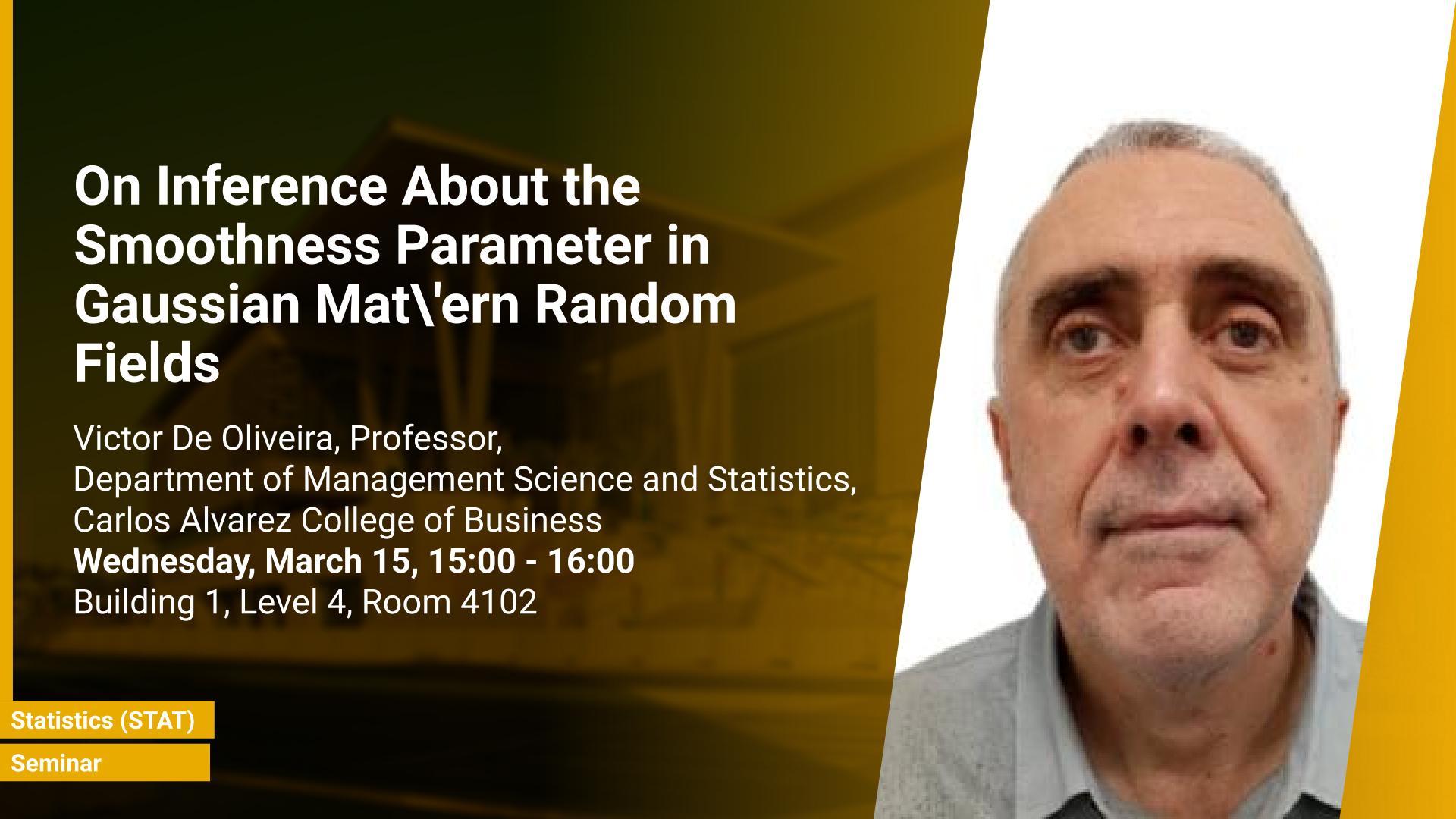Abstract
The Mat\'ern family of covariance functions is currently the most commonly used for the analysis of geostatistical data due to its ability to describe different smoothness behaviors. Yet, in many applications the smoothness parameter is set at an arbitrary value. This practice is due partly to computational challenges faced when attempting to estimate all covariance parameters and partly to unqualified claims in the literature stating that geostatistical data have little or no information about the smoothness parameter. This talk consists of two parts. In the first part I critically investigate this claim and show it is not true in general. Specifically, it is shown that the information the data have about the correlation parameters varies substantially depending on the true model and sampling design and, in particular, the information about the smoothness parameter can be large, in some cases larger than the information about the range parameter. In the second part I propose a new class of easy-to-compute default priors for the smoothness parameter. These priors approximate reference priors, but their analysis and computation is considerably simpler. It is shown that the posterior distribution of the parameters based on these priors is proper, and Bayesian inferences about the covariance parameters based on these priors have satisfactory frequentist properties, much better than those based on maximum likelihood. The methodology is illustrated with two real data sets.
Brief Biography
Dr. Victor De Oliveira is a professor in the Department of Management Science and Statistics in the Carlos Alvarez College of Business. He joined the UTSA faculty in 2006 and previously worked at the University of Arkansas and Simon Bolivar University. He holds a Ph.D. in statistics from the University of Maryland, and a master’s in water resources and a bachelor’s in mathematics from the Universidad Simon Bolivar. He teaches a variety of undergraduate and graduate courses in Statistics and Applied Probability.
